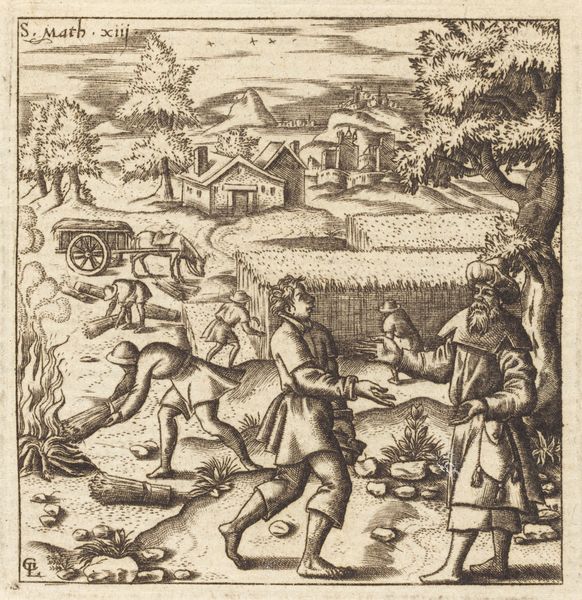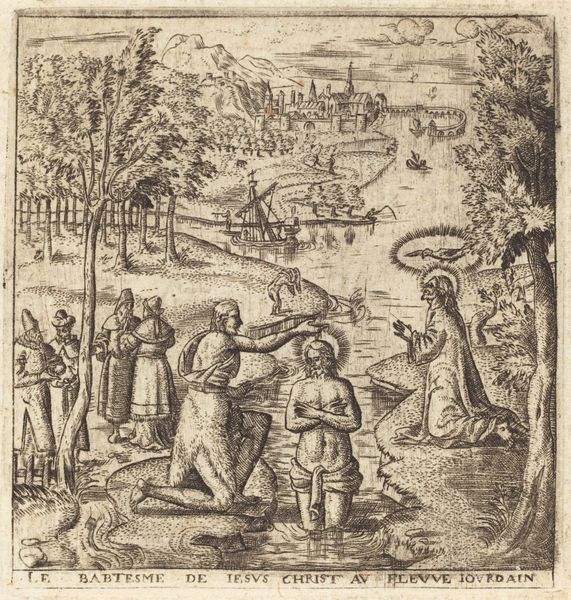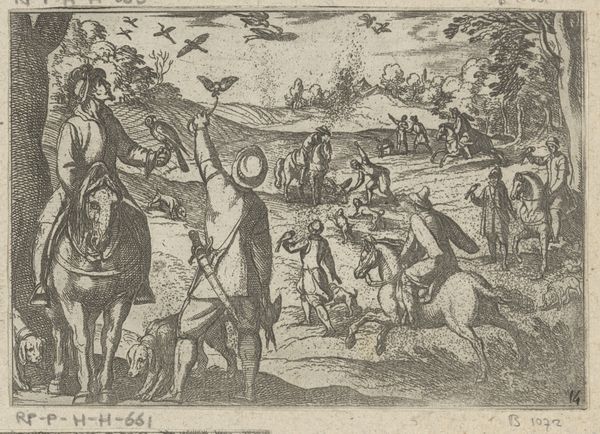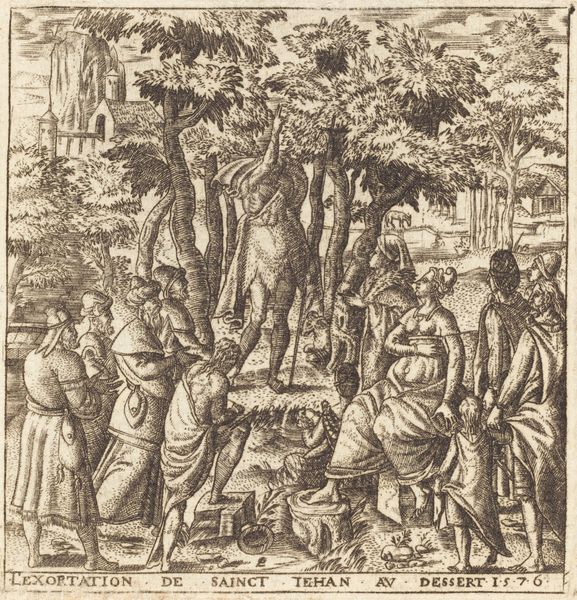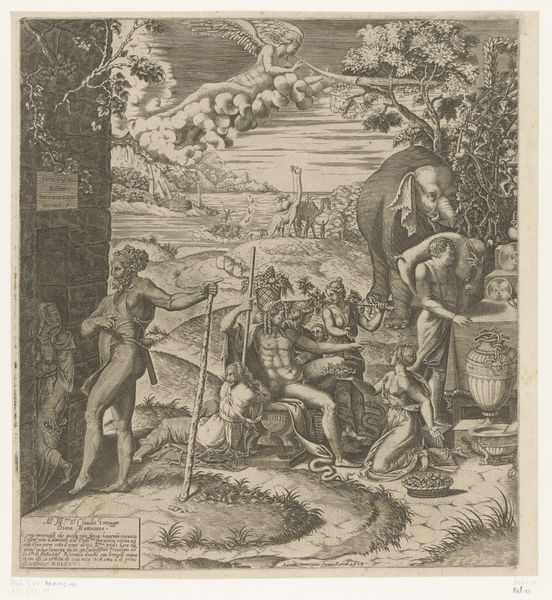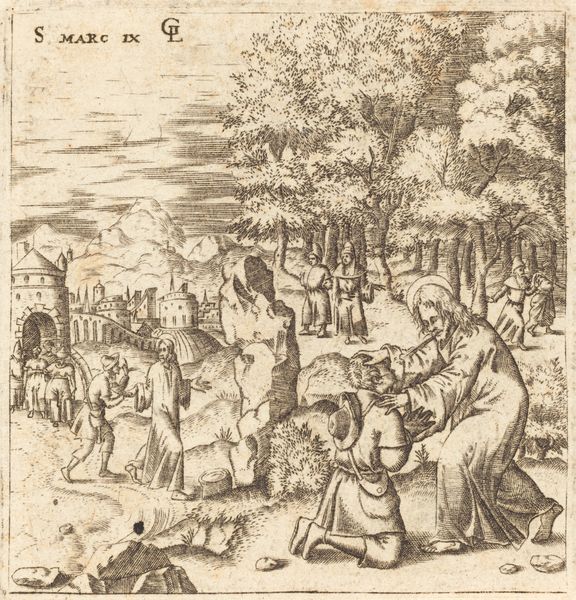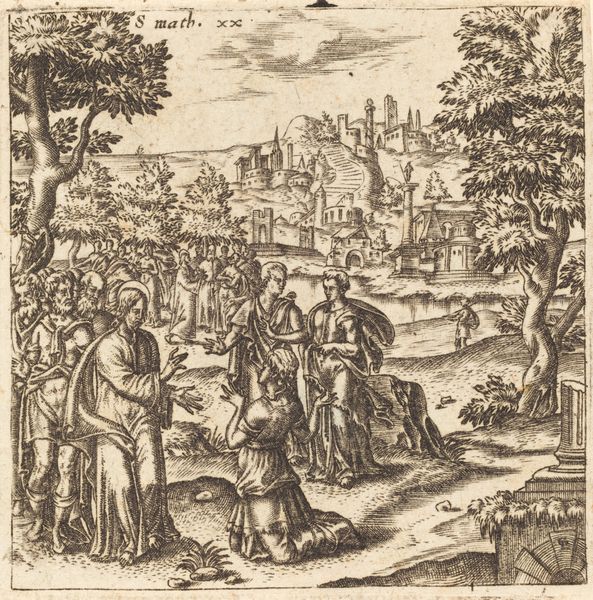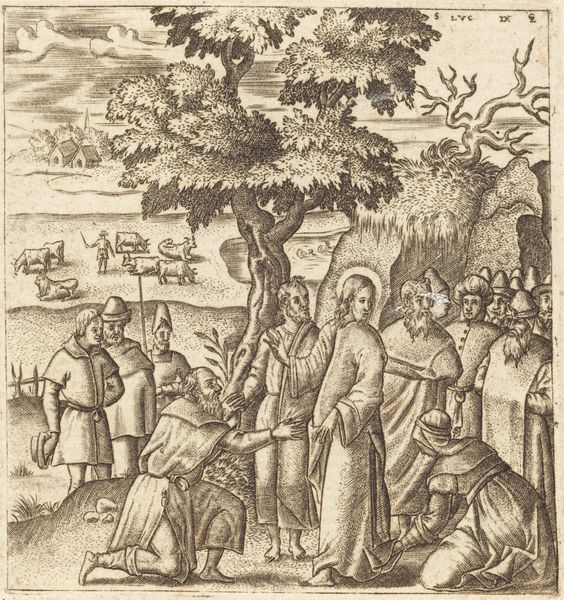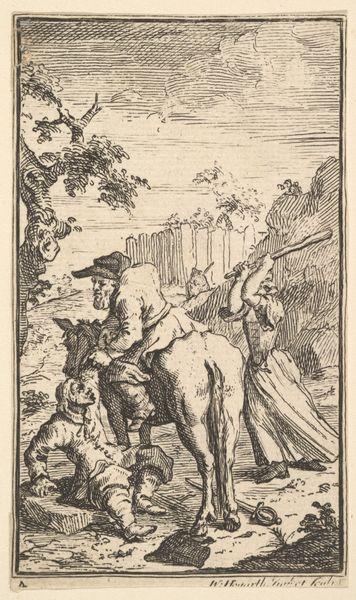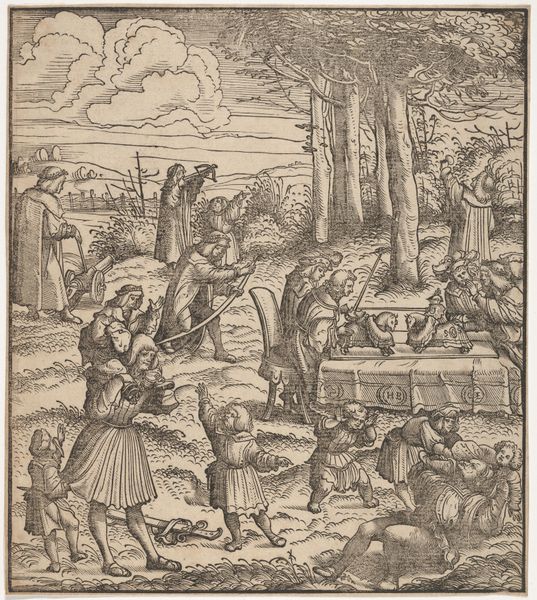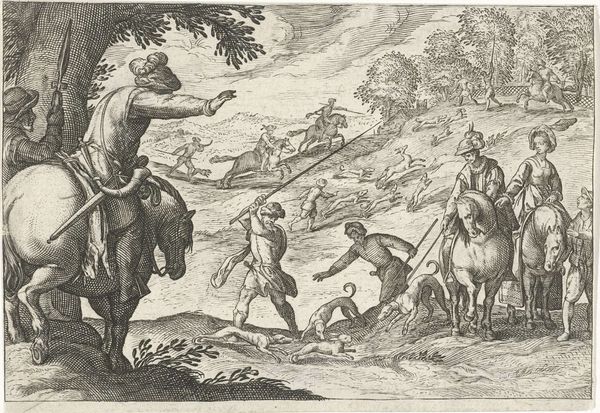
print, etching
#
narrative-art
# print
#
etching
#
landscape
#
mannerism
#
figuration
#
history-painting
Copyright: National Gallery of Art: CC0 1.0
Léonard Gaultier made this print, titled "The Good Samaritan," sometime in the late 16th or early 17th century. The image was achieved through engraving, a process that involves meticulously cutting lines into a metal plate, inking it, and then pressing it onto paper. Consider the labor involved: each line, each shadow, is the result of Gaultier's deliberate action. The density of the lines creates depth and texture, bringing the biblical scene to life. This contrasts sharply with the subject matter – the Samaritan's selfless act, a stark reminder of social responsibility. The carefully rendered landscape and figures emphasize the moral weight of the narrative. Engraving, as a method of reproduction, speaks to the wider circulation of ideas and images during this period. The print medium democratized art, making it accessible to a broader audience, and challenging traditional notions of artistic value tied to unique, handmade objects. The labor of the artist, therefore, becomes a means of spreading a message far and wide, intertwining art, ethics, and social context.
Comments
No comments
Be the first to comment and join the conversation on the ultimate creative platform.
